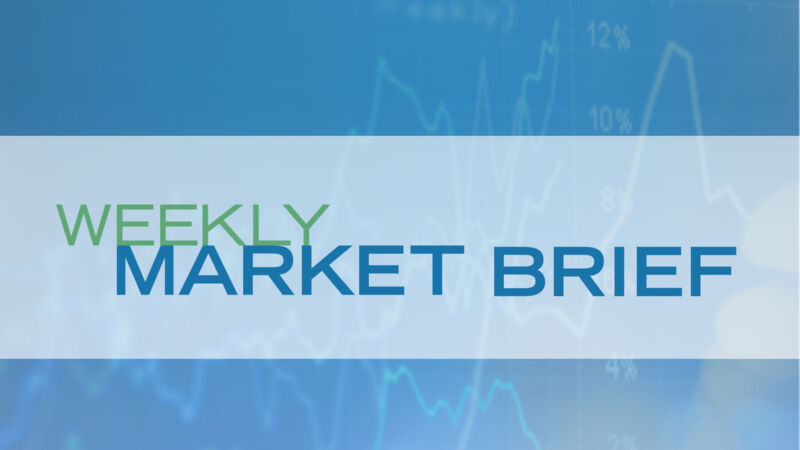|
|
- The U.S. government entered its 21st shutdown since 1976, furloughing workers and sparking short-term uncertainty, though history suggests there will likely be limited long-term economic or market impact.1
- ADP reported a loss of 32,000 private-sector jobs in September, signaling further signs of labor market slowdown.2
- Large U.S. lenders may see capital requirements flatten or decline as regulators move forward with the most significant bank rule overhaul since 2008.
1. Government Shutdown Begins as Funding Deal Fails
At midnight on September 30th, the federal government shut down after lawmakers failed to pass a short-term funding measure. The Senate vote on a Republican-backed resolution fell short, leaving roughly 750,000 federal employees furloughed and nonessential agencies closed.1 Essential services, including Social Security, Medicare, Medicaid, law enforcement, and air travel safety, remain in operation.
The central dispute was health care funding. Democrats pressed for extending Affordable Care Act tax credits and reversing cuts to Medicaid, while opposing reductions to health agencies.1 Without agreement, federal operations will remain limited until a new funding bill is approved.
Shutdowns are not new — this marks the 21st since 1976.1 Past closures typically slowed growth temporarily but had little lasting impact, as furloughed workers receive back pay. Economists estimate each week of disruption can reduce quarterly GDP by 0.1% to 0.2%, a small impact relative to the size of the U.S. economy.1
For markets, shutdowns have historically caused brief volatility but little long-term damage. The S&P 500 has often recovered in the months following past closures.1 With strong gains this year, investors may see near-term pullbacks, but broader drivers such as earnings, growth, and interest rates remain more important.
2. Private-Sector Jobs Decline in September as Hiring Weakens
Last week’s ADP employment report showed the U.S. shed 32,000 private-sector jobs in September, a steeper decline than economists expected.2 Forecasts had called for a 45,000 gain, resulting in disappointment and suggesting that momentum in the labor market continues to fade.
The losses followed a revised drop of 3,000 jobs in August.2 Leisure and hospitality saw the largest decline, down 19,000 roles, while education and health services added 33,000 positions.2 Hiring trends also split by employer size: Small firms with fewer than 50 employees cut 40,000 jobs, while large companies with more than 500 workers added 33,000.2
The weaker report comes as the Federal Reserve has already begun easing policy, lowering rates by a quarter point last month while signaling more cuts ahead.2 With the government’s official September jobs report delayed by the ongoing shutdown, economists are watching ADP’s figures more closely than usual. While ADP data can diverge from the Labor Department’s numbers, its revised methodology has offered earlier signals of labor market shifts in recent months.
3. Big Banks Poised for Relief as Regulators Ease Capital Rules
Last week, the Federal Reserve’s top regulator signaled they are preparing the most sweeping overhaul of U.S. bank capital rules since the 2008 Financial Crisis, in concert with other banking agencies. The effort, driven by President Trump’s appointees, aims to streamline requirements that the banking industry has long criticized as excessive.
The plan narrows a 2023 proposal under the “Basel III Endgame” that would have raised capital by nearly 20%.3 Instead, regulators are expected to adopt a “capital-neutral” approach that avoids industry-wide increases while adjusting how capital is allocated across institutions. Potential changes include easing the surcharge on global systemically important banks, tailoring leverage ratios, and making stress tests more transparent.3
Major lenders such as JPMorgan, Bank of America, and Citigroup, which together hold roughly $1 trillion in capital, anticipate that requirements could remain flat or decline, freeing up billions for lending, trading, dividends, and buybacks.3
Supporters argue that reducing red tape will boost economic activity. Critics counter that weakening safeguards may leave the system vulnerable if growth slows, with some estimates warning capital levels could fall by as much as $200 billion.3

For the period ending 10/3/25.
* Small-cap stocks are represented by the Russell 2000® Index. International stocks are represented by the MSCI EAFE. Bonds are represented by the Bloomberg US Aggregate Bond Index. Oil is represented by WTI Oil (West Texas Intermediate Oil), a benchmark for light, sweet crude oil and a primary measure for pricing oil contracts and futures in the U.S.
Sources
1 Bloomberg
2 ADP Employment Report
3 Reuters
Disclosures
Cary Street Partners is the trade name used by Cary Street Partners LLC, Member FINRA/SIPC; Cary Street Partners Investment Advisory LLC and Cary Street Partners Asset Management LLC, registered investment advisers. Registration does not imply a certain level of skill or training.
Any opinions expressed here are those of the authors, and such statements or opinions do not necessarily represent the opinions of Cary Street Partners. These are statements of judgment as of a certain date and are subject to future change without notice. Future predictions are subject to certain risks and uncertainties, which could cause actual results to differ from those currently anticipated or projected.
These materials are furnished for informational and illustrative purposes only, to provide investors with an update on financial market conditions. The description of certain aspects of the market herein is a condensed summary only. Materials have been compiled from sources believed to be reliable; however, Cary Street Partners does not guarantee the accuracy or completeness of the information presented. Such information is not intended to be complete or to constitute all the information necessary to evaluate adequately the consequences of investing in any securities, financial instruments, or strategies described herein.
Cary Street Partners and its affiliates are broker-dealers and registered investment advisers and do not provide tax or legal advice; no one should act upon any tax or legal information contained herein without consulting a tax professional or an attorney.
We undertake no duty or obligation to publicly update or revise the information contained in these materials. In addition, information related to past performance, while helpful as an evaluative tool, is not necessarily indicative of future results, the achievement of which cannot be assured. You should not view the past performance of securities, or information about the market, as indicative of future results.
A Composite PMI is a single index that tracks economic activity by combining the performance of both the manufacturing and services sectors, providing a comprehensive overview of overall business conditions.
Nothing contained herein should be considered a solicitation to purchase or sell any specific securities or investment-related services. It should not be assumed that any of the securities transactions or holdings discussed were, or will prove to be, profitable.
The Consumer Price Index (CPI) measures the monthly change in prices paid by U.S. consumers. The Bureau of Labor Statistics (BLS) calculates the CPI as a weighted average of prices for a basket of goods and services representative of aggregate U.S. consumer spending. The CPI is a measure of inflation and deflation. The CPI report uses a different survey methodology, price samples, and index weights than the producer price index (PPI).
Additional Disclosures: International and Foreign Securities, Fixed Income Investments, the Consumer Price Index, the Producer Price Index.
Comparative Index Descriptions: The Standard & Poor’s (S&P) 500 Index, The Russell 200® Index, The NASDAQ Composite Index, The MSCI EAFE Index, Dow Jones Industrial Average® (Dow Jones or DJIA), The Bloomberg Barclays US Aggregate Bond Index (US Agg Bond), The CBOE Volatility Index (VIX). CSP2025061_29


